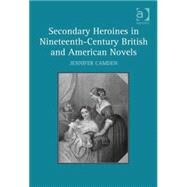Secondary Heroines in Nineteenth-century British and American Novels
, by Camden,Jennifer- ISBN: 9780754666790 | 0754666794
- Cover: Hardcover
- Copyright: 3/28/2010
Taking up works by Samuel Richardson, James Fenimore Cooper, Sir Walter Scott, and Catharine Maria Sedgwick, among others, Jennifer B. Camden examines the role of female characters who, while embodying the qualities associated with heroines, fail to achieve this status in the story. These umeshsecondary heroines,umesh often the friend or sister of the primary heroine, typically disappear from the action of the novel as the courtship plot progresses, only to return near the conclusion of the action with renewed demands on the reader's attention. Accounting for this persistent pattern, Camden suggests, reveals the cultural work performed by these unusual figures in the early history of the novel. Because she is often a far more vivid character than the heroine of the marriage plot, The secondary heroine inevitably engages the reader's interest in her plight. That the narrative apparently seeks to suppress her creates tension and points To The secondary heroine as a site of contested identity who represents an ideology of womanhood and nationhood at odds with the national ideals represented by the primary heroine, whom the reader is asked to embrace. In showing how the anxiety produced by these ideals is displaced onto the secondary heroine, Camden's study represents an important intervention into the ways in which early novels use character to further ideologies of race, class, sex, and gender.







